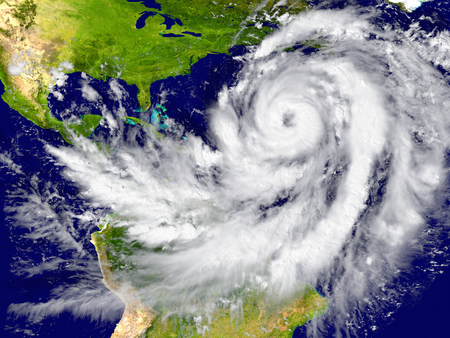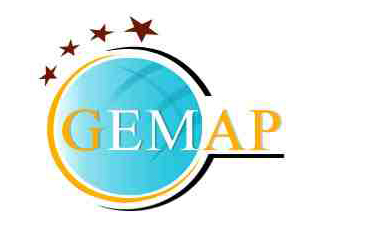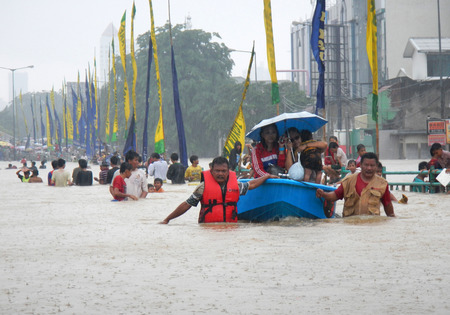[vc_row][vc_column][vc_text_separator title=”Services”][vc_column_text]
Global Emergency Management and Preparedness (GEMAP) , the Emergency Management Service Division of Transnational Resources Development Associates, is a multi-dimensional analytical consulting team. GEMAP offers extensive experience and problem solution capability in emergency management, homeland security, public safety, and medical response preparation.
GEMAP specializes in analysis, needs assessment, problem identification, and problem solution recommendations for both domestic and international clients.
[/vc_column_text][vc_row_inner css=”.vc_custom_1508991856028{margin-top: 25px !important;}”][vc_column_inner css=”.vc_custom_1508991972922{padding-right: 5px !important;}”][vc_column_text]
Among the areas of analytical specialties are:
- Evacuation, sheltering and disabled citizens preparedness (special needs) evaluation and analysis
- Radio systems interoperability and communication support analysis
- Fire service staffing, deployment analysis, incident management team training, hazardous materials analysis, management and operational analysis/evaluation
- Regionalization capability analysis
- Multi-agency Coordination System (MACS) development and implementation
- National Incident Management System (NIMS) compliance analysis and training
- National Response Plan (NRP) training consultation
- Grant application, administration, research, renewal and compliance consultation
- Mass care and feeding compliance evaluation and analysis
- Emergency logistical support analysis
- Public Health, medical surge, and mass casualty incident preparation and analysis
- Metropolitan Medical Response System grant compliance and implementation analysis
- Hospital emergency response preparedness and Joint Commission compliance procedures
- Prevalance study and infection control analysis and training
- Emergency support function training and implementation
- Comprehensive Emergency Management Program (CEMP) planning and implementation
- Local Emergency Operation Plan (EOP) and continuity of operations plan (COOP) analysis and evaluation
- Security and safety analysis
- Hazard, vulnerability analysis and risk assessment
- Crisis management planning
- Weapons of Mass Destruction (WMD) terrorism preparedness
- Team building for crisis response teams
[/vc_column_text][/vc_column_inner][/vc_row_inner][vc_row_inner][vc_column_inner][vc_column_text]
GEMAP offers experienced field operatives and provides an in-depth analysis and evaluation of your needs. Our solutions increase your agency or corporate effectiveness, efficiency and safety.
[/vc_column_text][/vc_column_inner][/vc_row_inner][/vc_column][/vc_row][vc_row][vc_column][vc_text_separator title=”Approach”][vc_column_text]
GEMAP, as a multi-dimensional team, offers expert consultation services on disaster preparedness and risk management issues. But our concept goes even further beyond the typical “all-hazards” concept to the new macro frontier of “generational-hazards.”
Traditional hazards such as terrorism (nuclear, radiological, bio-agent, chemical, high explosives), natural events (flooding, hurricanes, earthquakes), or other major disasters such as wildfires, hazardous materials, tornadoes, winter storms, drought, social disturbances, are external sources. In a sense “what is done to us.” They are usually urgent and result in deaths, injuries, significant impact to our economy and often result in social destabilization like that witnessed after Hurricane Katrina.
There is no question that effective preparation for natural and man-made disasters will increase the security of the United States. Recent disasters have shown the value of efficient evacuation of citizens, provision of basic sheltering needs and planning for extensive disabled citizens needs. In spite of the lessons learned, all levels of government, non-governmental organizations, and private providers are failing to prepare. In addition, citizen engagement in emergency planning remains low and federal and state funding is decreasing.
GEMAP recognizes the cause and effect of our changing political and economic factors and provides the evaluation and analysis capabilities to assist our customers in defining their emergency and preparedness needs. GEMAP offers guidance in maximizing local and regional response capabilities. GEMAP understands your needs for management and operational analysis. The National Incident Management System (NIMS) and National Response Framework (NRF) all require expertise in development and implementation that GEMAP provides. Staffing, communication and interoperability analysis by our trained experts will give you the solutions to imposed regulatory demands.
But this may not be enough to ensure intelligent long-term solutions to the disaster problems each of us must deal with. GEMAP offers a better more macro approach. We believe strongly that effective agencies, governments and leaders must look ahead to the long-term probabilities that define the future. The emerging “generational-hazards” must be taken into consideration to ensure the safety and security of all citizens, provide a more lasting solution and enhance the funding effectiveness of limited tax dollars.
Generational hazards include major items such as soaring debt, global warming, declining mathematics/science/engineering education, and declining infrastructure. Other generational hazards include mass privatization of government services, foreign energy dependence, and the demographic pressures of declining birth rates, aging population, and mass immigration. These hazards are “what we do to ourselves.” They are belated and have significant impact on the national economy, disaster preparedness, living standards and social destabilization (Patrick J. Massey, Homeland Security Affairs, Vol. III, and No.3. “Generational Hazards” September 2007, www.HSAJ.org).
Obviously, dealing with generational hazards requires political solutions. The reasons some homeland security and emergency management officials give for not dealing with generational problems is that it is too hard or not their job. GEMAP offers the expertise to explore the macro issues and offer long term solutions. This dilemma becomes all the more dangerous when you consider that emergency officials have their hands full already.
Some of the problems identified by the diffused efforts of federal, state and local governments are a lack of clear roles; limited coordination between levels of government, including how federal assets will be deployed; and no minimum standards or guidelines. The result is major differences in service and competencies across state and local agencies that must be factored into effective long-term solutions. Competencies must be benchmarked and measured to provide the answers to preparedness issues.
There are three key reasons to measure emergency preparedness:
- Performance measures allow planners to focus on the critical aspects of emergency planning.
- They hold officials accountable.
- And, they allow evaluators to identify deficiencies.
 GEMAP is the tool to resolving your disaster preparedness and emergency management weaknesses. Solving preparedness problems in a larger macro sense that offers long-term security to your organization or agency is our mission.
GEMAP is the tool to resolving your disaster preparedness and emergency management weaknesses. Solving preparedness problems in a larger macro sense that offers long-term security to your organization or agency is our mission.
Whether it’s pandemic influenza planning, mass casualty planning or simply analyzing short-falls in performance or response to regulatory requirements, GEMAP will answer your questions and solve your planning and security problems.
[/vc_column_text][/vc_column][/vc_row][vc_row bg_type=”bg_color” css=”.vc_custom_1508990709912{margin-bottom: 25px !important;padding-top: 25px !important;padding-right: 25px !important;padding-bottom: 25px !important;padding-left: 25px !important;}” bg_color_value=”#eeeeee”][vc_column][vc_text_separator title=”Business Development & Execution”][vc_row_inner][vc_column_inner width=”1/2″][vc_column_text]
FIRE SERVICE MANAGEMENT ANALYSIS
GEMAP offers skilled experts in the areas of performance audits, operational and management studies, staffing and deployment analysis, incident management team training, and hazardous materials analysis. Additionally, GEMAP offers assistance in team building for crisis response teams and weapons of mass destruction (WMD) terrorism preparedness.
GRANT DEVELOPMENT AND APPLICATION
GEMAP provides qualified experts in the development and application of federal, state and private grants. Understanding the application process and successfully moving through the maze of procedures and paperwork can be time consuming and frustrating. Our consultants are prepared to handle the details and position your organization or agency for approval. GEMAP provides experienced experts in Department of Health and Human Services and Department of Homeland Security grant areas, as well as private foundation requirements.
REGIONAL CAPABILITY ANALYSIS
Understanding the regionalization requirements of the Department of Homeland Security is a top priority for continued funding. GEMAP’s ability to evaluate and analyze regional capabilities for your region or governmental unit provides the assurance of compliance and maximizes your regional response posture. Metropolitan Medical Response System (MMRS) expertise will enhance your medical response capabilities. Public Health and medical surge issues are further complicating the ability to comply with all the new regulations. Let GEMAP’s experts assist you in this rapidly changing political atmosphere.
EVACUATION AND SHELTER ANALYSIS
Hurricane Katrina and the California Wildland fires have brought home the critical need to address evacuation and shelter needs at every governmental level. GEMAP offers the expertise to address these issues and provide consultation on mass care, feeding, and emergency logistical support. We specialize in the evaluation of special disabled citizens needs, mass notification systems, and transportation requirements.
RADIO SYSTEMS INTEROPERABILITY AND COMMUNICATIONS
It has been proven repeatedly that the first system to fail in a disaster is the communications system. GEMAP offers technical expertise to evaluate and solve your communication requirements. Our experts can evaluate your system from the ground up and provide interoperability solutions. Capabilities include the use of satellite, radio and computer based communication systems. Operational and administrative systems can be built from the ground up both before and during a critical emergency or disaster.[/vc_column_text][/vc_column_inner][vc_column_inner width=”1/2″][vc_column_text]NATIONAL INCIDENT MANAGEMENT SYSTEM COMPLIANCE
Does your organization understand and comply with all the requirements of the NIMS? GEMAP offers expertise in the area of training, administrative recording systems, and exercise development and execution. Meet all of the Department of Homeland Security requirements with our expert assistance. Continuance of federal funding depends on full compliance with NIMS. We can solve your NIMS concerns.
MASS CARE AND FEEDING ANALYSIS
Governmental leaders across the spectrum of government understand the additional requirements of meeting the mass care and feeding requirements of shelter operations. GEMAP offers expertise in incident command, logistical support analysis, and security and safety in support of shelter operations. GEMAP extends into the areas of special needs issues, pediatric requirements, inmate operations, and building crisis response teams. GEMAP can assist in setting up volunteer teams to support mass care and shelter operations.
HOSPITAL RESPONSE PREPAREDNESS
Hospitals are the key players in providing medical assistance during and after a major disaster. From victims to first responders, hospitals are critical infrastructure and must be protected from exposure to chemical, biological, radiological, nuclear, or explosive event. GEMAP associates provide the expertise in hospital preparedness and recovery solutions. Our experts understand the preparation, training and exercise requirements of the Joint Commission. Let GEMAP assist with your vulnerability and risk assessment. We can help in your continuity of operations plan (COOP) requirements and training.
HAZARD, VULNERABILITY AND RISK ANALYSIS
All disaster preparedness and planning begins with understanding the situation awareness. What are the hazards? How vulnerable are they? And what risk are we willing to accept to protect ourselves and critical infrastructure? GEMAP has experts that provide analysis and advice on these critical questions. GEMAP associates can help your organization develop and utilize a Comprehensive Emergency Management Plan (CEMP). Let it all begin with an evaluation and analysis from GEMAP.
SECURITY AND SAFETY ANALYSIS
GEMAP along with assistance from CIVARA Associates offers expert consultation in the area of security and safety. From critical infrastructure to critical personnel, our experts will provide guidance in how to make your environment safe and secure. Whether on a college campus, in a mall, or at a disaster, the analysis of security and safety needs is critical. Our experts will help your organization understand the hazards and potential problems. We will make you and organization safer and more secure.[/vc_column_text][/vc_column_inner][/vc_row_inner][/vc_column][/vc_row]
